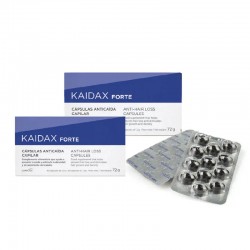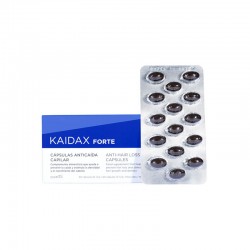FFP3
FFP3 masks
FFP3 masks
FFP3 masks filter at least 98% of air particles (with a maximum 2% inward leakage), up to 0.6 microns in diameter. Therefore, it protects very efficiently against different types of poison, dust, smoke and aerosols. Also, against bacteria, viruses and fungal spores. The use of this type of mask is recommended in situations of direct contact with high viral loads, being relegated to circumstances where the risk of contracting a viral or particle infection is high.
Some of these masks have a respiratory valve to allow greater and more effective perspiration, especially designed for dangerous environments in which the only problem is contagion or infection from the outside in, that is, where the only objective is to protect ourselves individually. ourselves. These masks with a respiratory valve should not be used in sterile environments, since despite guaranteeing maximum individual protection, they do not protect those around us, so we ourselves could, despite being protected, be the focus of dispersion. of viruses, bacteria or other pathogens.
At Farma2Go we have FFP3 masks with maximum filtration efficiency (99% of filtered particles), non-reusable and made of 5 layers of non-woven fabric, hot air cotton and melt-blown fabric, complemented with a polypropylene nose clip and a wire. stainless steel. For maximum savings and to be protected in activities that require this type of maximum security, you can purchase boxes of 20 FFP3 masks in individual bags, for better preservation and conservation.
How do you put on a mask?
- Avoid touching the inside of the mask.
- Adjust the elastic band around your ears until you are in a comfortable position.
- Adjust the external face of the mask to the structure of the face until it is well deployed and sealed.
- Adjust the nose clip with both hands until it fits firmly on your nose.
- Change the mask if it is wet, damaged or if you have breathing difficulties.
The effectiveness of protection will depend largely on proper handling and use.

It is recommended that adults supervise the placement, use and removal of the mask in children.
Masks with Valve
There are FFP3 mask models with a valve included that greatly facilitates breathing, however, they are exclusively reserved for medical personnel who care for patients infected with isolated contagious viruses, since these masks do not filter the air expelled when breathing. Without a doubt, they are the masks that best protect us individually, but they pose a great collective risk, so their use is not recommended in any public place. In addition, exhalation valves can even let out small droplets, making it much easier to spread if safety distance measures are not met.
They are not intended for use in ordinary people, but only in people who are certain to be healthy and who are working directly with patients with infectious respiratory pathologies. If the person wearing it is infected, it does not serve to prevent the spread of the virus, so far from helping to reduce infections, it could pose a very high risk to the surrounding population.
Therefore, to guarantee complete protection to ourselves and our environment, whenever we suspect that we may be a carrier of a contagious virus, we must use self-filtering masks without a valve, which provide great ease of breathing and filter microparticles both from outside to inside. inside, as well as from the inside out, protecting the user against inhalation of environmental contaminants in the form of particles or aerosols, and preventing our own from being expelled outside.
Type of PPE Masks
These types of masks are Personal Protective Equipment (PPE), whose function is to protect us from exposure to contaminants through the respiratory tract. To be calm and be able to perform our job duties without risks, it is important to be clear about what type of approved mask we need to use and what types of respiratory protection products are available on the market, in order to select the most appropriate one to protect ourselves in each specific case of the most effective way possible.
It is essential to carry out a correct analysis and study of the risks that an individual will face in their workplace, since not all respiratory protection masks that you can find on the market are valid for protection against depends. what diseases. It is important to assess the risk that we are going to face, since a work space in a center with influx and direct contact with infected people is not the same as one in which we simply must follow preventive measures in environments without proven direct contamination.
In fact, wearing a protective mask is not enough. In the workplace, we must avoid all types of risk situations, so we will need other complementary personal protective equipment such as gloves or glasses to guarantee, depending on the cases, adequate protection. Likewise, cleaning, hygiene and disinfection of the spaces and objects used are a priority, from a preventive point of view.
When we talk specifically about respiratory protection PPE, we can classify them into: protection products against gases, vapors and particles (reusable respiratory protection masks and respiratory assistance systems) and protection products against particles (disposable self-filtering respiratory protection masks for particles ). In this second case, which is the one we are dealing with, we are talking about equipment that complies with the UNE-EN 149:2001 + A1:2010 standard and can be of different types.
On the other hand, we can differentiate this type of masks according to whether they can be folded (in which the body of the mask can be folded flat) or if they are preformed (in which the mask has an anatomical preformed shape to fit the user face.
From the point of view of the barrier and taking into account the protection index, we can also classify highly effective FFP masks into three large groups:
-FFP1: Filtration efficiency 78%, ambient concentrations up to 4 VLA (low efficiency).
-FFP2: Filtration efficiency 92%, ambient concentrations up to 12 VLA (half efficiency).
-FFP3: Filtration efficiency 98%, ambient concentrations up to 50 VLA (high efficiency).
check_circle
check_circle


